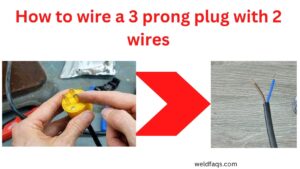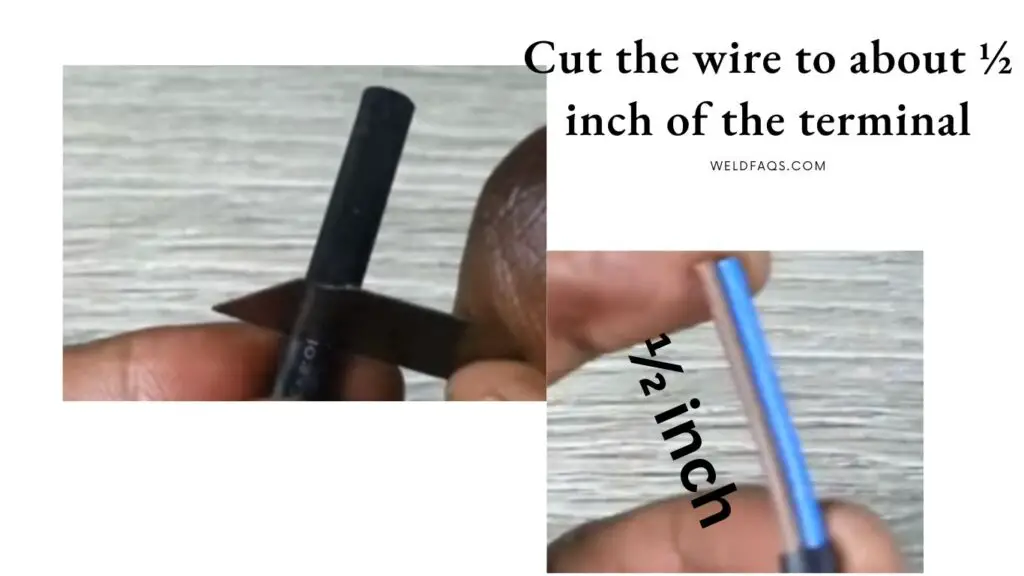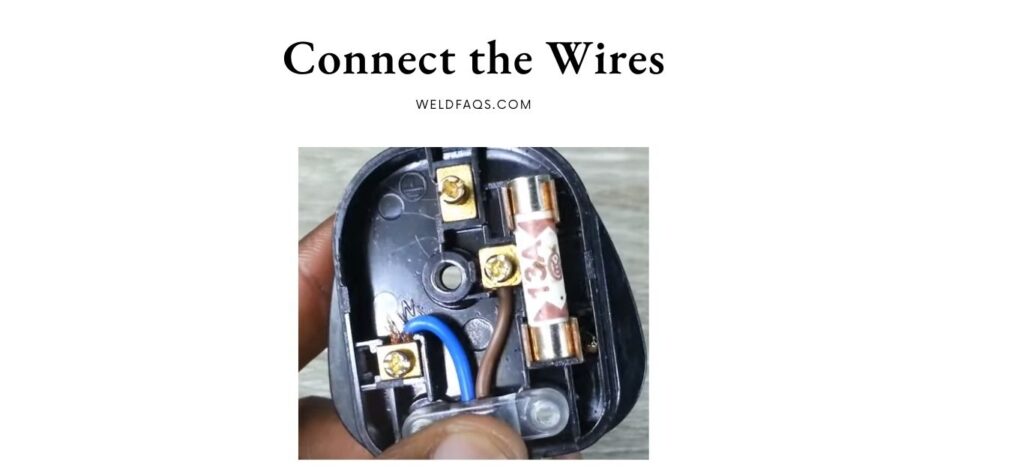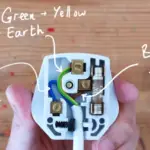If you have a basic two-core cable you want to use with a three prong plug, you will need to connect it to the plug. Fortunately, wiring a three prong plug with two wires is easier than it seems.
And in this article we are going to be looking at how to wire a 3 prong plug with 2 wires. But before we get to the wiring it is important to know what the 3 prongs are for.
- Live: The first prong in a three prong plug is the live and is one of the two prongs positioned side by side.
- Neutral: The other prong is the neutral prong
- Ground/Earth: The last is the ground and is usually the standalone prong that appears larger than the other two.
Now that we know what the three prongs are for, we need to now consider the tools and materials we need for the job.
Tools and Materials Needed
You will typically need the following to connect two wires to a three prong plug.
- Wire stripper or cutter
- A voltage tester
- Needle nose pliers
- A 4 in-1 screwdriver
- Electrical cable
- Wire connectors which can be wire nuts or push fit connectors
- A receptacle
how to wire a 3 prong plug with 2 wires
Once you have the above tools ready to use, it is time to get started on the task. Here is how to go about it.

Step One: Turn Power Off
For safety reasons the first step is to cut the power supply to the receptacle you want to use. Before starting on the actual wiring ensure the power is off. You can use a voltage tester to ensure the power is off.
Step Two: Cut Wire Insulation
Next take the two wire cable you want to connect to the three prong plug and cut the insulation. This should reveal the bare wire inside the insulation. Use a wire stripper or cutter for this task. Cut the wire to about ½ inch of the terminal.

If you are working with a wire from a two wire plug, first cut the wire from its plug before stripping the wires of the insulation.
Step Three: Unscrew The Three Prong Plug
Next take the three prong plug you wish to connect the two wire cable to. Unscrew the plug and remove the wire binder as well. Do this to access the inside of the plug where you will do the connection.
Step Four: Connect the Wires

Next take the two stripped wire ends and twist them to make them compact. You should have two bare wire ends. Slot the two wires into the live and neutral terminals of the three prong plug. In most cases the neutral wire is white in color with the live one being red or black.
Step Five: Re-connect the plug
Once you are done connecting the wires take the cover of the three prong plug and reattach it. Screw it into place. Once this is done it’s time to test your plug to see if it is working. Plug it into an outlet or use a voltage tester.
Safety Precautions To Take while Wiring
While this process is relatively easy, it can also be risky, if the right safety precautions are not taken. So what safety precautions should you take when connecting a three prong plug with two wires?
- Turn Off the power: The first safety precaution is to turn off the power in the area you are working on. This can be done in the main panel. Find the correct breaker that directs power to the area you are working on and turn it off.
- Wear protective Gear: Next precaution is to have protective gear on. Wear safety goggles to protect your eyes.
- Ensure you have Correct Polarity: Polarity is how electricity flows in the proper direction. When doing any wiring ensure the polarity is correct. When wiring a receptacle you maintain the correct polarity by connecting the wirings to the right terminal
- The black or red hot wire should go to the bronze-colored terminal. On the other hand, the white neutral wire goes into the silver-colored terminal.
- Secure the wires: The two wires go into the two terminals. Ensure they are secure before testing. Some plugs come with screws that you can tighten after inserting the wires. Make sure these screws are tightened before testing the plug.
Frequently asked Questions
Ques-1: Is the Ground Prong important in a 3 prong plug?

Ans: The ground prong is responsible for creating a grounding path. This is important as it creates a low resistance path to the main panel. The purpose of this is to prevent electrical shocks and damage to your appliance.
Ques-2: Why Do Some Appliances not have 3 prong plugs?
Ans: There are some appliances that have a 2 prong plug, meaning they do not have a ground plug. This is because such appliances have mechanisms to protect against electrical surges. This can include an internal voltage adapter or plastic case insulation. These internal mechanisms protect the appliance from short circuiting and thus do not require a ground prong.
Ques-3: Is it safe to remove the ground prong or not use it?
Ans: No, if your appliance requires a three prong plug, you should use it. The ground prong is a safety measure used in the event of a fault or electrical issue. If you remove it you increase the chances of damaging your appliance in case of an electrical fault. Thus it is not advisable to remove the ground prong from a three prong plug.
Ques-4: What is the alternative to wiring a three prong plug with two wires?
Ans: If you do not feel safe wiring a three prong plug with two wires, you can use a three prong adapter also called a cheater plug. This adapter has inserts for a three prong plug and on the other side two inserts for the two wires.
Conclusion
In some cases you may have two wire connections that you want to use with a three prong plug. As seen in this article it is possible to wire the prong with two wires. The process is not complicated and when you follow the safety precautions we have outlined it should take a few minutes to complete.
